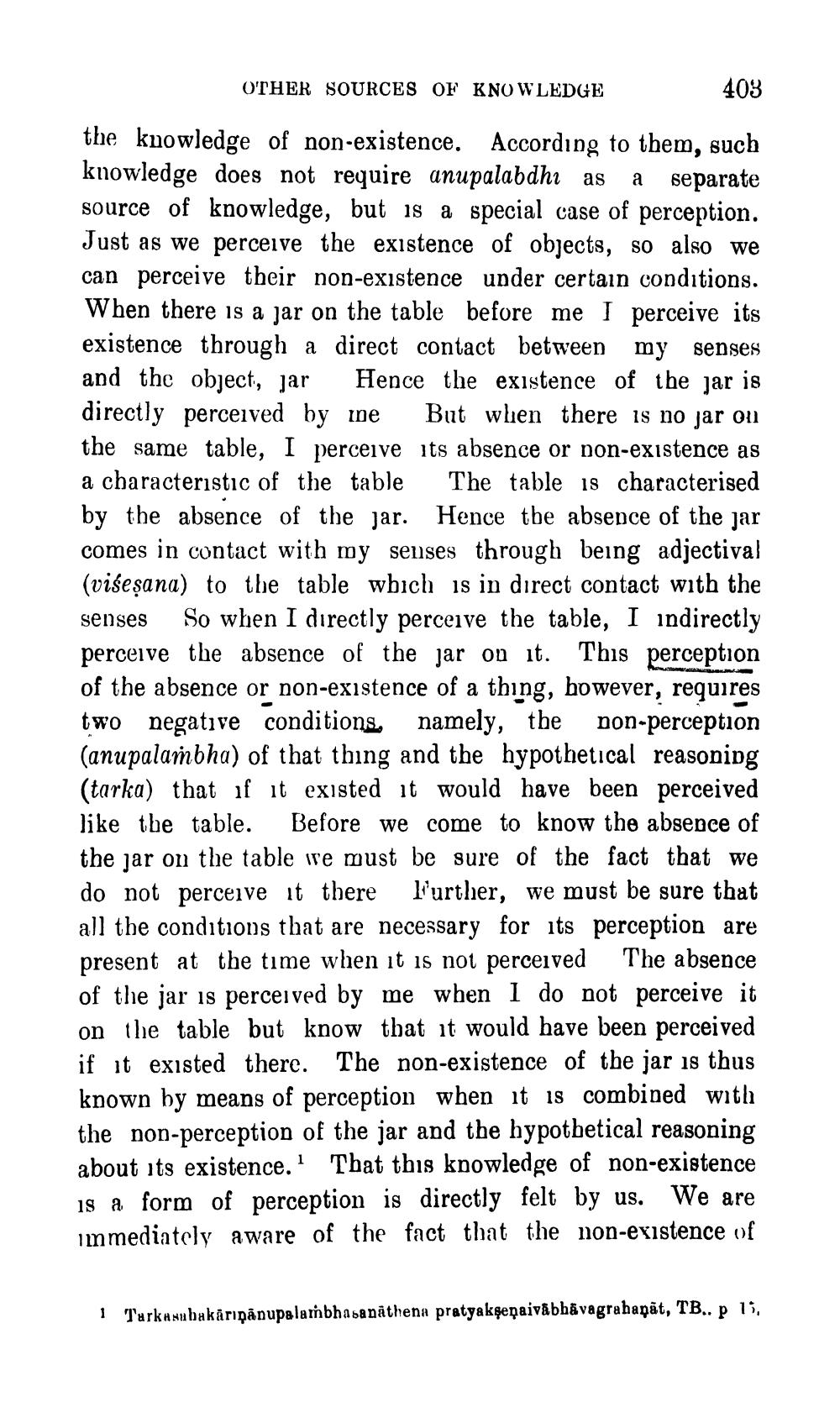________________
OTHER SOURCES OF KNOWLEDGE 403 the knowledge of non-existence. According to them, such knowledge does not require anupalabdh as a separate source of knowledge, but is a special case of perception. Just as we perceive the existence of objects, so also we can perceive their non-existence under certain conditions. When there is a jar on the table before me I perceive its existence through a direct contact between my senses and the object, jar Hence the existence of the jar is directly perceived by me But when there is no jar on the same table, I perceive its absence or non-existence as a characteristic of the table The table is characterised by the absence of the jar. Hence tbe absence of the jar comes in contact with my senses through being adjectival (višeşana) to the table wbich is in direct contact with the senses So when I directly perceive the table, I indirectly perceive the absence of the jar on it. This perception of the absence or non-existence of a thing, however, requires two negative conditions, namely, the non-perception (anupalambha) of that thing and the hypothetical reasoning (tarka) that if it existed it would have been perceived like the table. Before we come to know the absence of the jar on the table we must be sure of the fact that we do not perceive it there l'urther, we must be sure that all the conditions that are necessary for its perception are present at the time when it is not perceived The absence of the jar is perceived by me when I do not perceive it on the table but know that it would have been perceived if it existed there. The non-existence of the jar is thus known by means of perception when it is combined with the non-perception of the jar and the hypotbetical reasoning about its existence. That this knowledge of non-existence is a form of perception is directly felt by us. We are immediately aware of the fact that the non-existence of
1 Tarkanubakaripānupalambhasanåthena pratyakşeņaivabhävagrahapăt, TB.. p 13,




